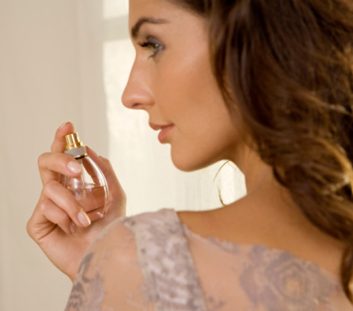
A perfume language lesson
Perplexed by perfumery jargon? Very much like appreciating a fine wine, enjoying fragrance doesn’t require an elaborate vocabulary-you can simply wear whatever you like. But just as knowing the differences between, say, shiraz and merlot can educate your palate, understanding the perfume lexicon can elevate your sense of smell and help you sniff out your next favourite scent. “Learning the language not only explains what you are investing in, but also helps when you want to research a product online or in the store,” says Marian Bendeth, Toronto-based global fragrance expert and owner of Sixth Scents fragrance consulting. “It’s important to know what you’re buying. Why does it cost that much? What are the differences between A and B? What family or families do I gravitate toward?” Before you hit the beauty counters, product sites or the lively debates on perfume blogs, take this language lesson.
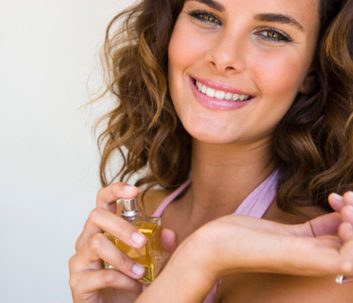
Top, middle and base notes
These are ingredients that form “the pyramid,” the traditional perfume structure. The top notes (often citrusy or green) are perceivable instantly but fade the fastest. The middle or heart notes (florals are popular, but the possibilities are countless) need time to unfold and form the scent’s core personality. The base notes (e.g., vanilla, spicy, amber, animalic, resinous) develop most slowly but linger longest. This is why it’s crucial to test a fragrance on your skin for a few hours before buying-first impressions evolve. Says Bendeth, “Do not buy a perfume simply by smelling the atomizer head! What you’re smelling is just the alcohol and the top notes.”
While most perfumes fit the pyramid mould, a few play with alternatives. Issey Miyake Pleats Please eau de toilette (EDT) ($76, 50 mL) opts for a “moving fabric”-like structure, where you can smell different facets at once. The new Estée Lauder Modern Muse eau de parfum (EDP) ($65, 30 mL) has a “dual-impression” structure built around two contrasting elements: a sparkling jasmine accord and a sleek woods accord.
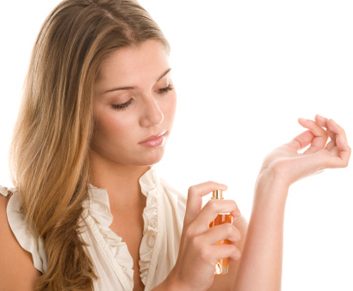
Accord
When two or more notes are deftly combined to form one new impression, the result is called an accord (think of musical chords that are played together). This can be used to invent some unusual effects you couldn’t capture from nature-such as the “smoky fog accord” in Épice Marine EDT ($250, 100 mL), the latest bottle in the unisex luxury Hermès Hermessence line. Then there’s the iconic dessert-like personality of Thierry Mugler Angel Refillable EDP ($95, 25 mL), which is a scent that features praline, caramel and vanilla.
A signature accord can also be the DNA of an entire brand. “Guerlinade,” for instance, has been common to many Guerlain perfumes since 1889, and it’s included in La Petite Robe Noire EDT ($60, 30 mL). Although the exact formula is a trade secret, Guerlinade is said to include bergamot, rose, jasmine, iris, tonka bean and vanilla.
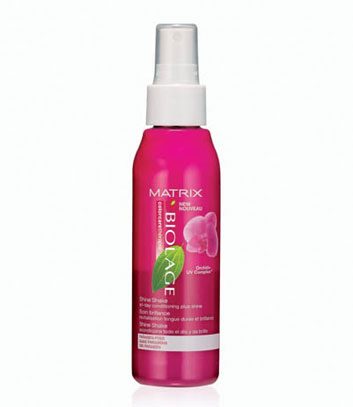
Absolute
A rose by any other name would smell as sweet-but in the fragrance world, an aroma’s intensity depends on the extraction process used by the perfumers. An absolute is extracted using a solvent (such as alcohol) instead of high-heat steam distillation, and yields richer results. It’s thought that rose absolute, for example, smells more like the natural flower than “rose otto,” the more mellow essential oil you get from steam distillation. The new Marni Rose EDP ($75, 30 mL) features both Bulgarian rose oil and rose absolute, while Lancôme Trésor Lumineuse EDP ($67, 30 mL) highlights rose otto.
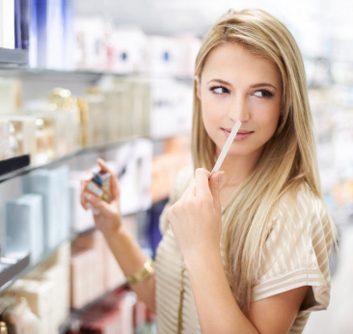
Flankers
These are spinoffs of “pillar” perfumes, sometimes launched as limited editions. The concentration of existing notes may be adjusted, or a few new ones added to the mix. Dior J’adore Voile de Parfum ($85, 50 mL), for instance, is a lighter take on the original Dior J’adore, while Elie Saab Le Parfum EDP Intense ($115, 50 mL) deepens its previous Elie Saab Le Parfum with ylang-ylang and patchouli. Although flankers are not radical departures, don’t assume you’re smelling the same old thing. Limited-edition Musc for Her Oil Parfum from Narciso Rodriguez ($175, 50 mL) has “a lighter, translucent musk” than the original For Her EDP, observes Bendeth.
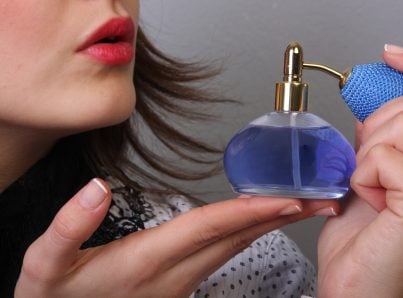
Synthetics
These are lab-produced molecules, also called aromachemicals. (Note: Anecdotally, it’s thought that Chanel No. 5, which debuted in 1921, popularized the use of synthetic notes in perfumery, though they had existed before that.) “Synthetics are needed to structure a perfume,” explains Denyse Beaulieu, the Paris-based Canadian author of the book The Perfume Lover, explaining that they prevent a scent from smelling like an unpleasant, confused jumble of competing natural notes. “Say you wanted to make a floral with essence of jasmine, tuberose and rose. If you simply mix them all together, you have the three tenors, each singing his own song at the same time.” So instead, all mainstream perfumers create a fragrance’s skeleton with synthetic molecules, then use naturals to “put on a bit of flesh,” she explains. Lab-invented molecules are also important when governments ban a natural ingredient for use in fragrances because it’s thought to cause allergic reactions, or when the threat of extinction makes it off-limits. Indian sandalwood is endangered, for instance, and using real ambergris (a leathery note originally from sperm-whale secretion) is prohibited in many countries-hence the rise of synthetic amber notes. An example is the velvety Ambrox, found in the new Aerin Amber Musk EDP ($125, 50 mL).
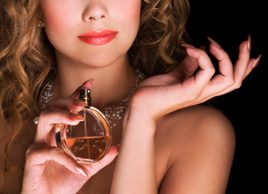
Overdose
Generally, fragrance suppliers provide perfumers with recommended concentrations for notes-that is, an ideal range of how much to use. Plus, there are limits set by the Geneva-based International Fragrance Association (IFRA). An overdose is the technique of using more than expected, without exceeding industry maximums. The iconic example is Chanel No. 5 (EDP $102, 50 mL), which owes its luminous, powdery effect to an overdose of aldehydes (a synthetic note)-a serendipitous mistake made by the perfumer’s assistant, as legend has it. More recently, the new Prada Candy L’Eau EDT ($62, 30 mL) gets its warm, honey-like sweetness from an overdose of the tree resin benzoin.
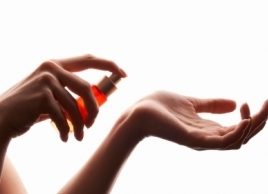
Sillage
French for “trail,” this is the subtly scented air you leave behind after you’ve walked away-not to be confused with the overbearing cloud that results from spritzing on too much! “A good fragrance needs to have sillage,” says Beaulieu, and the new Carven Le Parfum EDP ($88, 50 mL) was created with particular attention to that. Apart from the sillage, how long a perfume lasts on the skin is also a hallmark of quality: “A good eau de toilette should last about two hours, and an eau de parfum between three to four,” Bendeth says. So you can expect the new Givenchy Play for Her EDT ($82, 75 mL) to linger a bit less than the original Play for Her EDP.
On the flip side, a shoddy perfume can go wrong in many ways: It might have notes you find unappealing, or be technically unbalanced (getting dominated by too much of one thing), or evolve poorly over hours. “A perfume can be bad if after a nice melody at the beginning, it becomes nothing-a nondescript mishmash,” Beaulieu says.
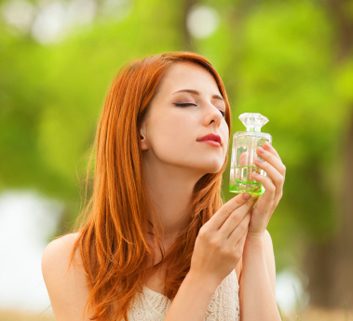
Chypre
Scents are traditionally classified into families-fresh, floral, oriental, woody-and the chypre (pronounced “shee-pruh”) is one of the lesser-known genres. Made famous in 1917 with Coty’s Chypre, this is a family defined by a citrusy, woody and mossy mix-traditionally, from bergamot, labdanum, patchouli and oakmoss. Reinvented modern chypres, which use synthetic oakmoss (the real thing is restricted) and often bigger doses of patchouli, have found a big new fan base: In 2000, chypres accounted for three percent of women’s fragrance sales globally; by 2011, that number had risen to 24 percent, according to L’Oréal. New chypres include the niche scent Le Labo Ylang 49 EDP ($155, 50 mL) and Giorgio Armani Sì EDP ($95, 50 mL).
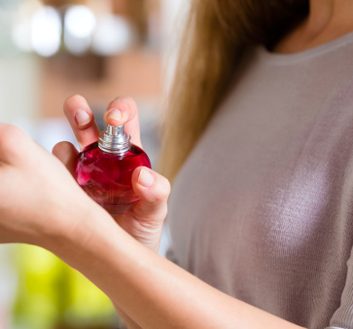
Oud
This ingredient (which rhymes with “food”) is beloved in fragrances worn in Middle Eastern countries. It originally derived from the rich, musty, incense-like resin of the agarwood tree, and is now commonly a synthetic. With a tiny, almost animal, dimension, “it’s an acquired taste,” admits Beaulieu. U.K.-based supplier Ungerer predicts oud will be a major trend into 2014. You can find it in heady new brews like Dolce & Gabbana Velvet Tender Oud EDP ($235, 50 mL), By Kilian Musk Oud EDP ($450, 50 mL) and Valentino Valentina Oud Assoluto EDP ($148, 80 mL).
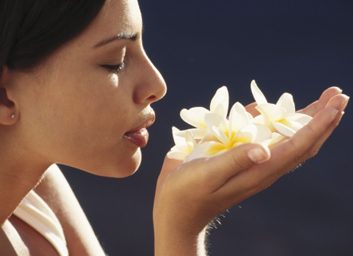
Soliflore
This is a fragrance devoted to interpreting a solitary flower. Enthusiasts say having few distractions allows you to better appreciate the nuances of that single flower. Indie perfumer Annick Goutal crafted an entire Soliflore Collection-including Le Chèvrefeuille EDT (honeysuckle) and La Violette EDT (each $95, 100 mL)-while Cartier Baiser Volé d’Amour EDP ($167, 100 mL) celebrates every part of the lily, with whiffs of the pistils, petals and green leaves. Soliflores are uncommon; most fragrances tend to incorporate many flowers. Instead of the usual citrusy top notes, Lise Watier Neiges EDP ($70, 50 mL) opens with four different blooms (hyacinth, lily of the valley, rose and jasmine), and the new Jo Malone Peony & Blush Suede Cologne ($70, 30 mL) features jasmine, rose and gillyflower.
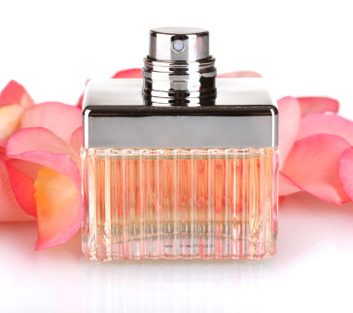
The juice
This is slang for the liquid in the bottle. What about the colour of “the juice”? How that is achieved depends on many factors. “Natural colourants can be used as well as synthetic ones,” says Stephen Weller of the IFRA.
If our lexicon of scent has helped clear the air, that’s all the better when this season’s new fragrances waft your way.
Related:
• Quiz: What’s your perfume scent personality?
• How to choose the perfect perfume
• The truth about fragrance sensitivity
